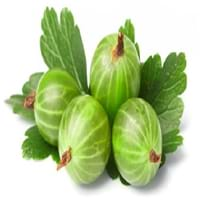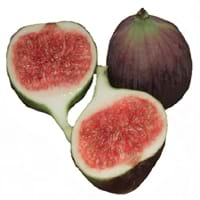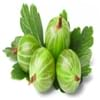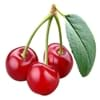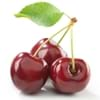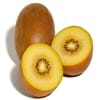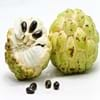Health Benefits
Arthritis prevention, Cancer prevention, Liver health, Scurvy treatment, Ulcer prevention
Cancer prevention, Controls blood pressure, Heart care, Increase in haemoglobin, Prevents constipation, Prevents macular degeneration, Reduces nervous tension
General Benefits
Boosts immune system, Digestive aid, Eye care, Fights against infections, Improves blood circulation, Maintains healthy cholesterol level, Sore throat treatment, Treatment of common cold
Controls blood pressure, Helps in weight loss, Maintains healthy cholesterol level, Strengthens bones
Skin Benefits
Anti-aging benefits, Brightens and lightens complexion, Reduces wrinkles, Treatment of acne
Brightens and lightens complexion, Hydrates skin, Skin rejuvenation, Treatment of acne
Hair Benefits
Prevents hair loss, Promotes longer and healthier hair, Treatment of dandruff
Good conditioner, Regulates hair growth, Softening mask
Allergy Symptoms
Constipation, Diarrhea, Drop in blood pressure, Eczema, Facial swelling, Hives, Hoarseness, Itching, Itchy eyes, Nausea, Red rash, Redness of eyes, Runny nose, Sore eyes, Swelling of mouth, tongue or lips, Tingling sensation in mouth, Vomiting
Abdominal pains, Anaphylaxis, Coughing, Headaches, Hives, Itching, Nasal congestion, Skin rash, Sneezing, Sore throat, Swelling of hands
Side Effects
Gastric irritation
Allergic reaction, Skin rash, Possibly unsafe during pregnancy
Best Time to Eat
Best if taken as a breakfast (or empty stomach), As a snack in the late afternoon, Don't consume at night and before bed, Morning time (before lunch)
Best if taken as a breakfast (or empty stomach), Don't consume at night and before bed, Morning time (before lunch)
Vitamin B5 (Pantothenic Acid)
Vitamin C (Ascorbic Acid)
Vitamin K (Phyllochinone)
Not Available
Lutein+Zeaxanthin
Not Available
Calories in Fresh Fruit with Peel
Calories in Fresh Fruit without Peel
Not Available
Not Available
Calories in Frozen Form
Not Available
Calories in Dried Form
Not Available
Type
Berry, Tree fruit
Tree fruit
Season
Summer
Summer, Winter
Varieties
Whinham's Industry, Green Hansa, Clark, Chataqua, Invicta, Keepsake, Lepaa Red, May Duke and Whitesmith
Abyad, Adriatic, Alma, Atreano, Bataglia, Black Bethlehem, Black Madeira, Black Mission, Brown Turkey, Sierra, Calimyrna, Kadota, Deanna, Figoin and Hardy Chicago Fig
Color
Green, Purple, Red, Yellow
Green, Purple, Red
Inside Color
Yellowish Green
Pink
Origin
Africa, Europe, South-West Asia
Western Asia
Soil Type
Loamy, Well-drained
Clay, Limestone, Loam, Sandy
Climatic Conditions
Dry, Warm
Dry, Warm
Facts about
- Traditionally, kids were told that babies were found under gooseberry bushes.
- They are also called 'fayberries' due to an ancient belief that fairies hid in gooseberry bushes to avoid danger.
- Fig tree is considered as a symbol of abundance, fertility and sweetness.
- The fig is made up of 55% of natural sugar so they are the sweetest fruits.
- Figs are used as a fat substitute in recipes.
Top Producer
Germany
Turkey
Other Countries
Austria, Czech Republic, Denmark, Hungary, Lithuania, Poland, Russia, Ukraine, United Kingdom
Albania, Algeria, Brazil, Egypt, Iran, Morocco, Syria, Tunisia, United States of America
Top Importer
Not Available
France
Top Exporter
Not Available
Turkey
Botanical Name
Ribes uva-crispa
Ficus carica
Synonym
Ribes grossularia
Not Available
Subkingdom
Tracheobionta
Tracheobionta
Division
Magnoliophyta
Magnoliophyta
Class
Magnoliopsida
Magnoliopsida
Subclass
Dillenhidae
Alismidae
Order
Saxifragales
Rosales
Family
Grossulariaceae
Moraceae
Species
R. uva-crispa
Ficus carica
Generic Group
Saxifrage
Mulberry
Difference Between Gooseberry and Fig
We might think that Gooseberry and Fig are similar with respect to nutritional value and health benefits. But the nutrient content of both fruits is different. Gooseberry and Fig Facts such as their taste, shape, color, and size are also distinct. The difference between Gooseberry and Fig is explained here.
The amount of calories in 100 gm of fresh Gooseberry and Fig with peel is 44.00 kcal and 74.00 kcal and the amount of calories without peel is Not Available and Not Available respectively. Thus, Gooseberry and Fig belong to and category.These fruits might or might not differ with respect to their scientific classification. The order of Gooseberry and Fig is Saxifragales and Rosales respectively. Gooseberry belongs to Grossulariaceae family and Fig belongs to Moraceae family. Gooseberry belongs to Ribes genus of R. uva-crispa species and Fig belongs to Ficus genus of Ficus carica species. Beings plants, both fruits belong to Plantae Kingdom.
